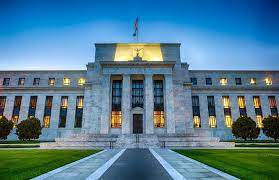Washington November 3 2021: The Federal Reserve on Wednesday said it will begin trimming its monthly bond purchases in November with plans to end them in 2022, but held to its belief that high inflation would prove “transitory” and likely not require a fast rise in interest rates, reported by Reuters.
However, the U.S. central bank nodded to global supply difficulties as adding to inflation risks, saying that those factors “are expected to be transitory,” but would need to ease to deliver the anticipated drop in inflation.
A L S O || R E A D
Oil Declines Ahead of OPEC+ Meet as U.S. Supplies Edge Up
“In light of the substantial further progress the economy has made,” the Fed said it would start cutting its bond purchases, as was broadly expected, marking a formal shift away from policies put in place in March of 2020 to battle the sharp downturn and massive layoffs caused by the COVID-19 pandemic.
Yet even in announcing a $15 billion monthly cut to its $120 billion in monthly purchases of Treasuries and mortgage-backed securities (MBS), it did little to signal when it may begin the next phase of policy “normalization” by raising interest rates.
“Economic activity and employment have continued to strengthen,” the policy-setting Federal Open Market Committee said in its statement at the end of a two-day meeting, but did not change its intent to leave its benchmark overnight interest rate near zero until inflation had hit 2% and was “on track to moderately exceed 2% for some time.”
Overall, the central bank said it still believed that recent high inflation would abate, but the small change in language indicated Fed officials see the process taking longer.
Inflation by the Fed’s preferred measure, the personal consumption expenditures price index, has run at double the target rate since May, but officials are reluctant to change their policy outlook until it is clear that the pace of price increases won’t ease on its own.
The Fed instructed its market agents at the New York Fed to begin executing the reduced bond purchases in the middle of this month, but only laid out that plan for November and December. Starting in mid-November, it will buy $70 billion of Treasuries and $35 billion of MBS per month, a pace that will drop to $60 billion of Treasuries and $30 billion of MBS per month in mid-December.
A L S O || R E A D
UREA sales to increase by 23 percent in October says AHL
Policymakers, the Fed said, judge that “similar reductions in the pace of net asset purchases will likely be appropriate each month, but (are) prepared to adjust the pace of purchases if warranted by changes in the economic outlook.”
U.S. stocks gained ground following the release of the statement, with the S&P 500 index (.SPX) erasing a modest loss to rise 0.10%. The yield on the benchmark 10-year U.S. Treasury note rose to a session high near 1.60% and the dollar weakened against a basket of major trading partners’ currencies.
“They’re hedging their bets, but that’s not anything new, because we’ve heard publicly they’re a little less confident that things are going to come down as quickly on the inflation side as they thought,” said Joseph LaVorgna, Americas chief economist at Natixis in New York.
“Along with supply disruptions, things just drag on a bit longer and the statement reflects those realities,” he said.










